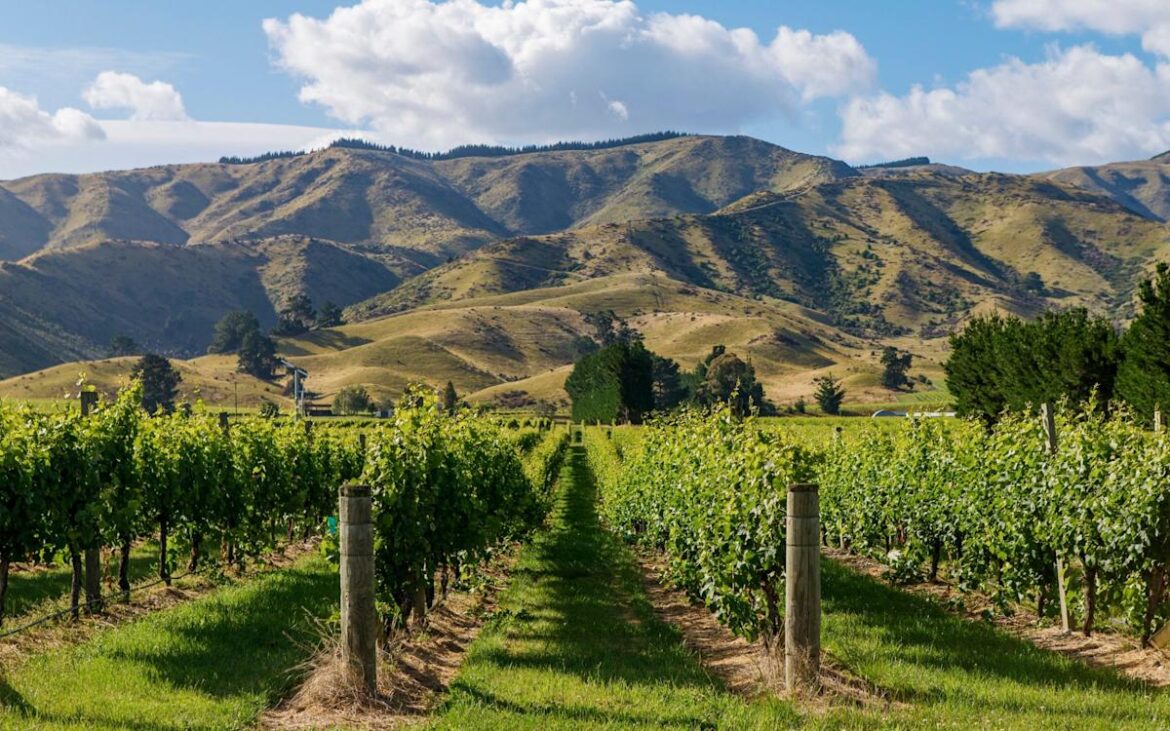As you sip the many local wines and weave your way through the crowd at the joyous annual Marlborough Wine & Food Festival, it’s easy to assume that wine and viticulture has long existed in the region. Not so.
Until only 50 years ago, this verdant north-east slice of New Zealand’s South Island was populated by sheep; the first to plant commercial vines there was the Montana winery in 1973.
Australian winemaker David Hohnen spotted the potential for aromatic, crisp white wines from Marlborough too, founding the Cloudy Bay winery in 1985. The success of its sauvignon blanc made Marlborough world-famous.
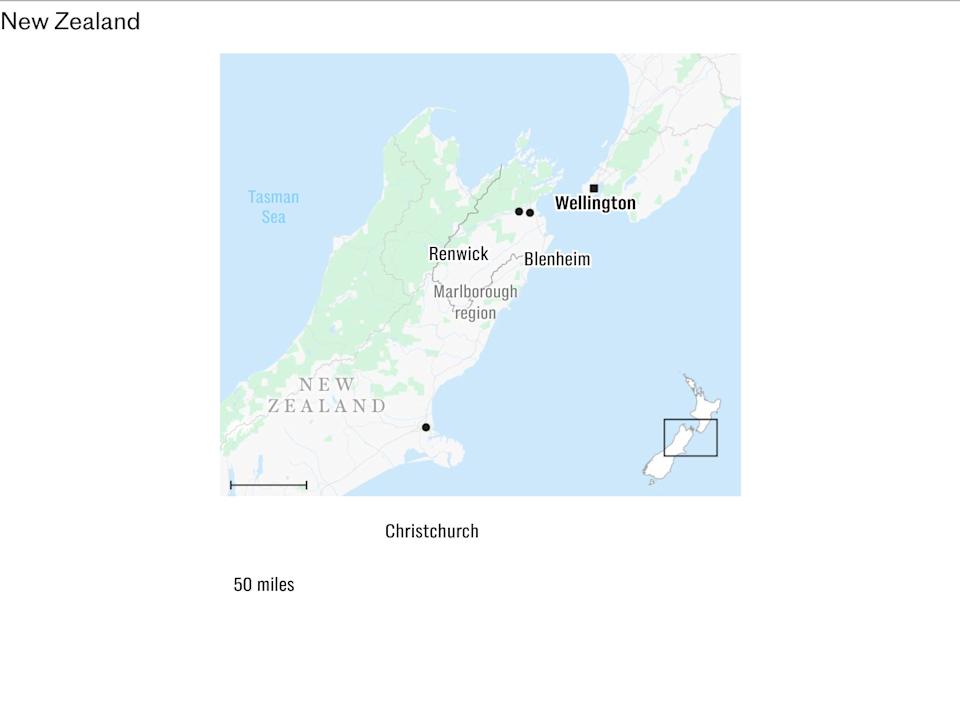
Vines quickly edged out most of the sheep and Marlborough sauvignon is now considered a modern classic; nowhere else does this grape variety deliver such exuberant, zesty aromas and flavours – tangy gooseberries, fresh lime juice, passion fruit and tomato leaf among them.
This distinctive character is primarily down to the long hours of bright sunshine through the Marlborough growing season and a sharp fall in temperature at night, leaving fresh acidity in the fruit and a whistle-clean finish to the wines.
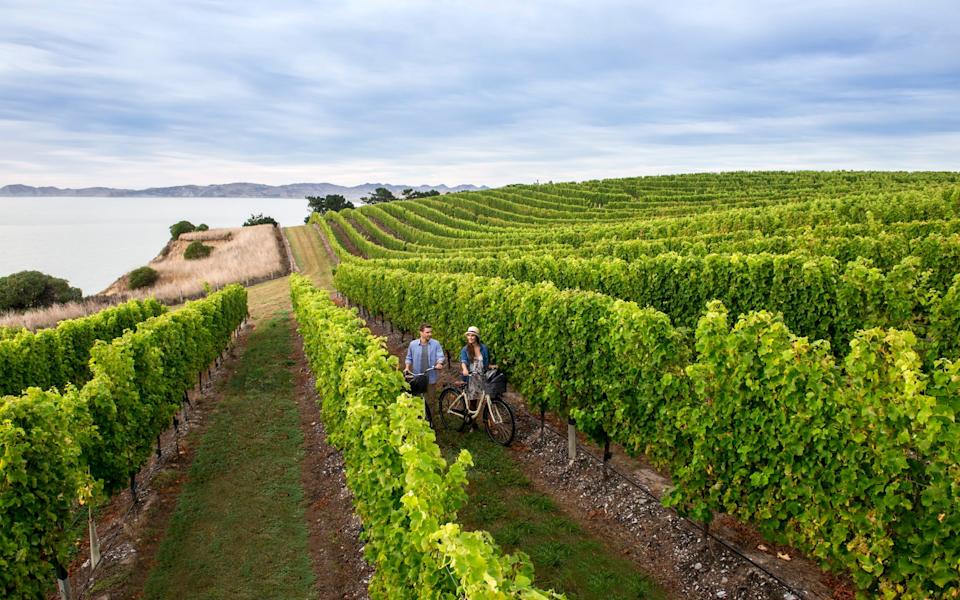
There are now more than 160 wineries in the Marlborough wine region – Mike Heydon
Marlborough’s vinous gold rush developed quickly over the 1990s and 2000s – and so did its wine tourism. There are now more than 160 wineries in the region, mainly centred around the main town of Blenheim and nearby Renwick.
New Zealand’s largest and most famous wine-producing region, Marlborough draws in wine aficionados from across the globe to its many cellar doors, hotels and restaurants, not to mention the scenic joys of the nearby Marlborough Sounds.
They’re not only there to enjoy the famous “Savvy B”, though that remains by far the most widely planted grape. Today Marlborough wins international awards for its cool-climate pinot noirs, chardonnays and Champagne-method sparkling wines too, while newly minted star whites from Iberian grape albarino are also steadily making a name for themselves.
At fifty years old, this region’s wineries and off-shoot attractions remain youthful, inventive and warm in their welcome. It’s an ideal place to explore if wine is your thing; here’s how to do it.
What to do
For general information and to plan winery visits, marlboroughwinenz.com and nzwine.com are both reliable ports of call. Many of Marlborough’s wineries lie in the Wairau Valley around Blenheim and Renwick, just a few miles apart, so it’s easy to plan on visiting several in one day.
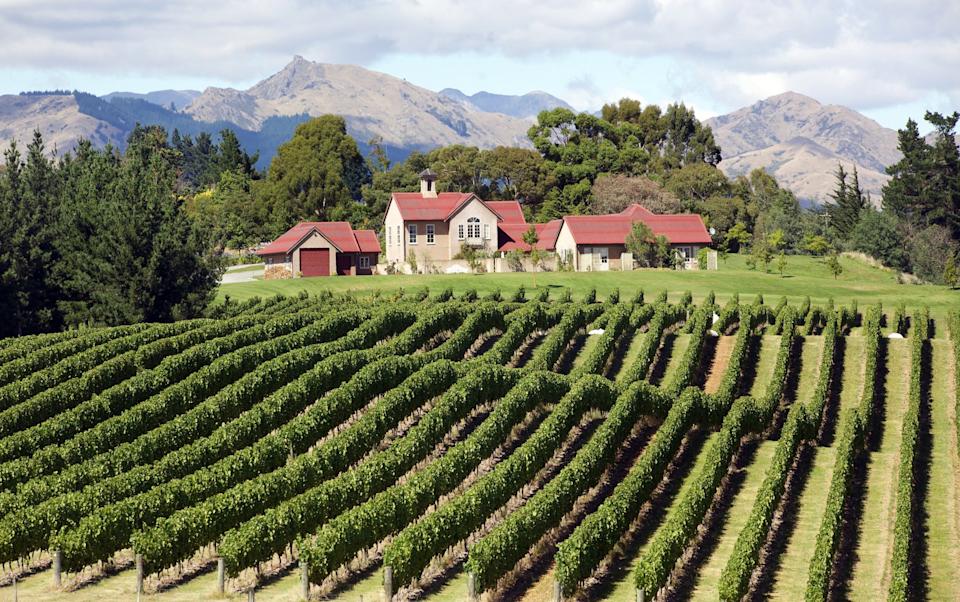
The Bell Tower on Dog Point, a B&B set on the Western hillside of Marlborough’s Dog Point Vineyard – Tim Clayton
A pilgrimage to the iconic Cloudy Bay winery, with its lovely views of the Richmond Ranges, will be high on any visitor’s list. Seated tastings of the range at the cellar door last 30-45 minutes and cost from $25/£11.25. Flop in a bean bag in the garden afterwards; Jack’s Raw Bar, open in summer, serves up oysters and local clams.
From here it’s a short hop to Rimapere’s cellar door, by contrast much smaller but with a pretty garden, sunny deck and turquoise parasols.
Certified organic, Rimapere serves its own excellent sauvignon blanc as well as pinot noir and more from sister winery Akarua in Central Otago. Tastings cost from $20/£9 – and you can pre-order a cheese platter.
A few kilometres nearer Renwick are two family-owned wineries offering informal tastings every day. Forrest Wines’ spacious lawned garden is popular with families and groups, especially during its Sunday summer live music sessions. There’s no need to book and no set tasting format here, but don’t miss the pioneering, naturally low-alcohol “Doctors” Forrest wines.
Next, head to near-neighbour Nautilus Estate, which has a chic bar and outdoor tables; book a good-value 25-minute session to sample four of its sophisticated wines for $15/£6.75.
Around 30 minutes’ drive south from Blenheim in the Awatere Valley, Yealands Estate offers a different view with tastings, cold platters and picnics to take to its picturesque, coastal Seaview vineyard overlooking the Cook Straits.
Drive, cycle or walk through the (sometimes blustery) White Road route and do try Yealands’ fine albarino.
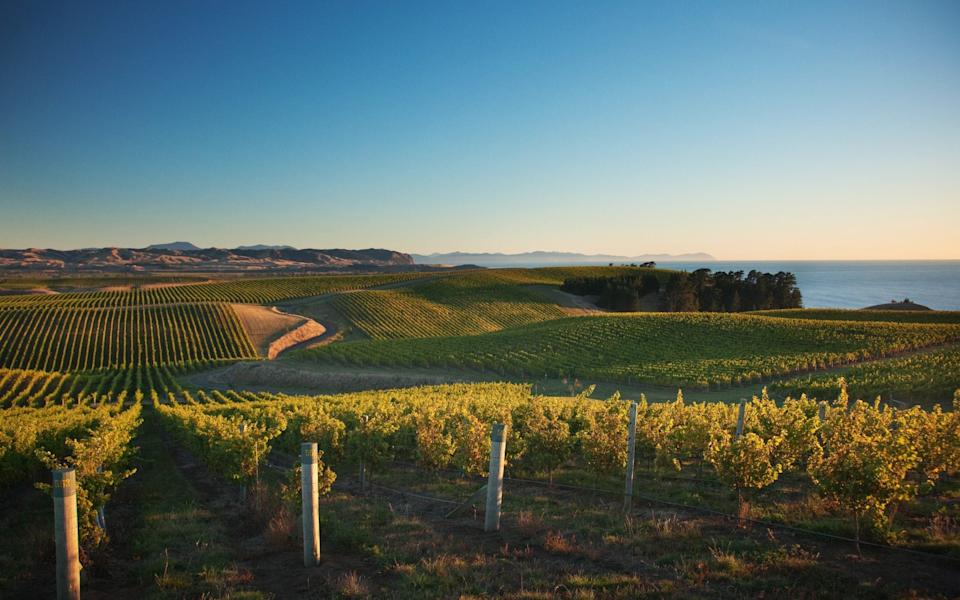
The Yealands Estate winery has coastal views – Yealands
Where to eat
You certainly won’t go hungry here. Herb & Olive café in central Blenheim rustles up wholesome breakfasts and lunches using local ingredients (its smoothies also come highly recommended), while the newly opened Small Town Winery in the heart of the town is a wine lover’s dream. Owned by Astrolabe Wines, it’s an urban working winery with an informal restaurant (think charcuterie and cheese boards) where wine flights (four 40ml samples) are priced from $20.
Near Blenheim’s railway station, Fidelio’s café and wine bar has a good range of local wines and international labels, as well as tapas, cheese and charcuterie. For something more upmarket, head to Harvest restaurant at The Marlborough, where the peaceful garden deck makes for a pleasant spot to indulge in the signature Mibrasa grilled lamb shoulder.
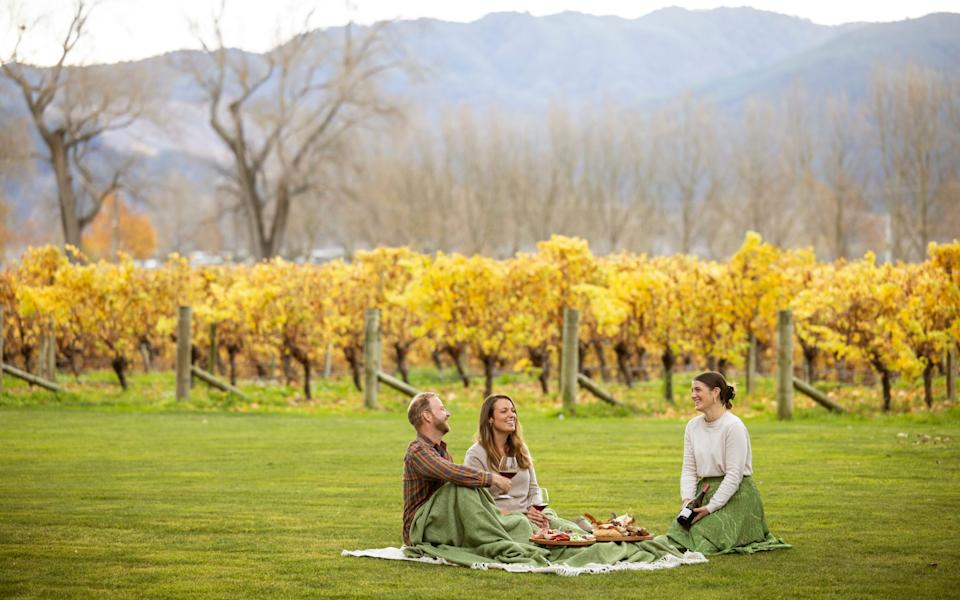
Oenophiles enjoy a picnic in the vineyards of Blenheim in New Zealand – Graeme Murray
One of the best winery restaurants in the region, however, is No. 11 at Wairau River on the vineyard-laced Rapaura Road. It’s only open for lunch, but serves inventive, delicious seasonal sharing plates with wine tastings on the same spot. In the Marlborough Sounds, seek out the famous New Zealand green-lipped mussels; 70 per cent of the country’s are sourced here. They’re steamed, battered, grilled or chowder-ed at The Mussel Pot in Havelock, and go perfectly with the local sauvignon blanc, naturally.
Where to stay
It’s sensible to opt for a base in Blenheim if you plan to see as many wineries and vineyards as possible. Here, your best options are the eight-bedroom 14th Lane Urban Hotel, which is close to wine bars, cafés and restaurants and has strong eco-credentials (doubles from $325/£146), or the great-value Carnmore Chateau Marlborough, a larger central Blenheim hotel in a quiet spot with a suntrap of an outdoor pool (doubles from $136/£61).
Alternatively, stay just outside town in a rural setting, self-catering in one of four colonial cob-style cottages at St Leonards (Winemaker’s Cottage costs from $325/£146 and sleeps two, minimum two-night stay); or rent The Nineteenth, a swish two-bedroom house with sweeping vineyard views from the terrace (from $350/£157 for two people, or $450/£202 for four people, minimum two-night stay).
Fifteen minutes drive from Blenheim and surrounded by its own beautiful parkland and vineyards, The Marlborough is a luxury boutique hotel set in a former convent, and makes for a particularly elegant option (doubles from $1000/£446, includes pre-dinner cocktails).
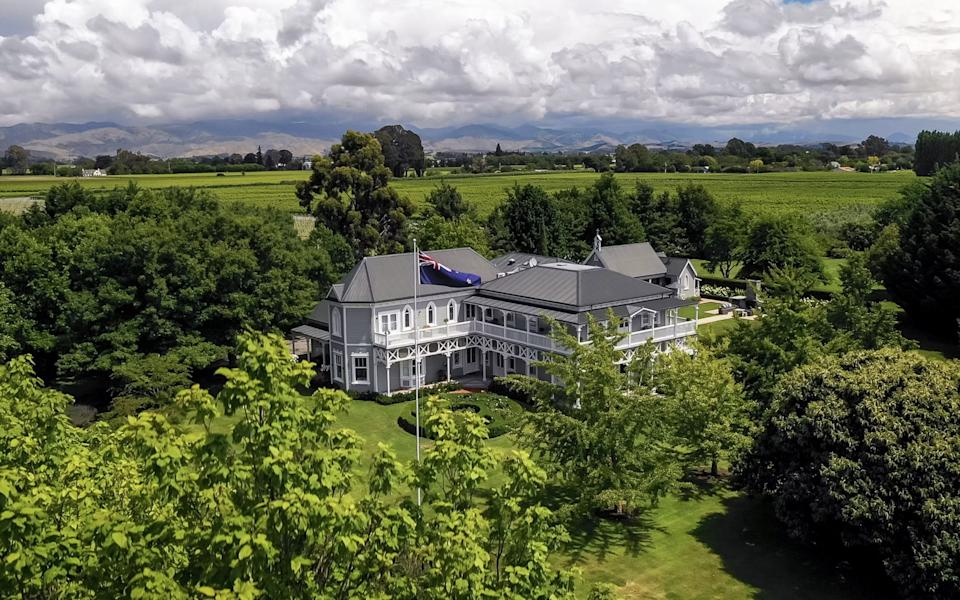
The Marlborough hotel is ‘particularly elegant’ – The Marlborough Hotel
If you plan to incorporate an excursion to the Queen Charlotte Track, a base at the head of Endeavour Inlet in the Marlborough Sounds is logical. Furneaux Lodge has versatile accommodation including suites, cottages and basic hiker’s cabins (from $195/£88 for two).
Which wine tours to book
The Marlborough Tour Company offers good full-day or afternoon winery visits (from $125/£56pp), as well as organising one-day tours of two wineries followed by a seafood cruise in the Marlborough Sounds (from $275/£124 pp).
Alternatively, do it all by bike with Bike 2 Wine Tours, who will pick you up from your accommodation, provide bikes (and all the kit), then return you at the end of the day. You can also stay the company’s B&B in Renwick, which costs from $65/$29pp.
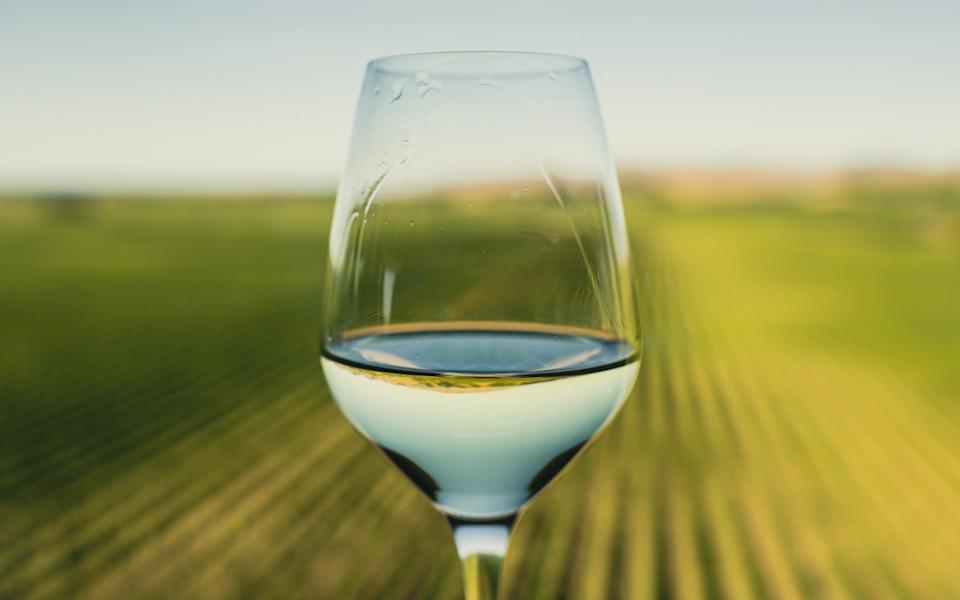
Combine a wine tour with a bike ride or a seafood cruise – Mike Mackinven
If you’re keen to splash-out, book a private tour with Jimmy Rawdon, who has more than two decades of experience in the wine industry and drives groups of up to four around the wineries in his red Mercedes, explaining practices such as organic and biodynamic winemaking as well taking in important Maori and European settlers’ historical sites. Prices start at $325/$146pp, not including meals.
When to go
November to April is the best period in which to visit the region, within which the spell from January to March is likely to guarantee you the sunniest, brightest days, and coincide with the majority of winery events.
Marlborough Wine & Food Festival is held on the second Saturday in February (February 14, 2026), while the evening beforehand sees the more intimate Brookby Beats music and wine festival take over a beautiful Southern Valleys’ vineyard location with local musicians and DJs, regional wine tastings and street food stands. From late February through April, expect the hustle and bustle of the grape harvest – fun to witness, but be prepared for hefty harvesting machines and grape trucks lumbering along the roads.
How to get there
New Zealand’s major international airports are Auckland (North Island) and Christchurch (South Island). From Auckland, Air New Zealand has regular flights to Blenheim. From Christchurch, Sounds Air flies to Blenheim in 50 mins. Or drive from Auckland, taking the Interislander across the Cook Strait.
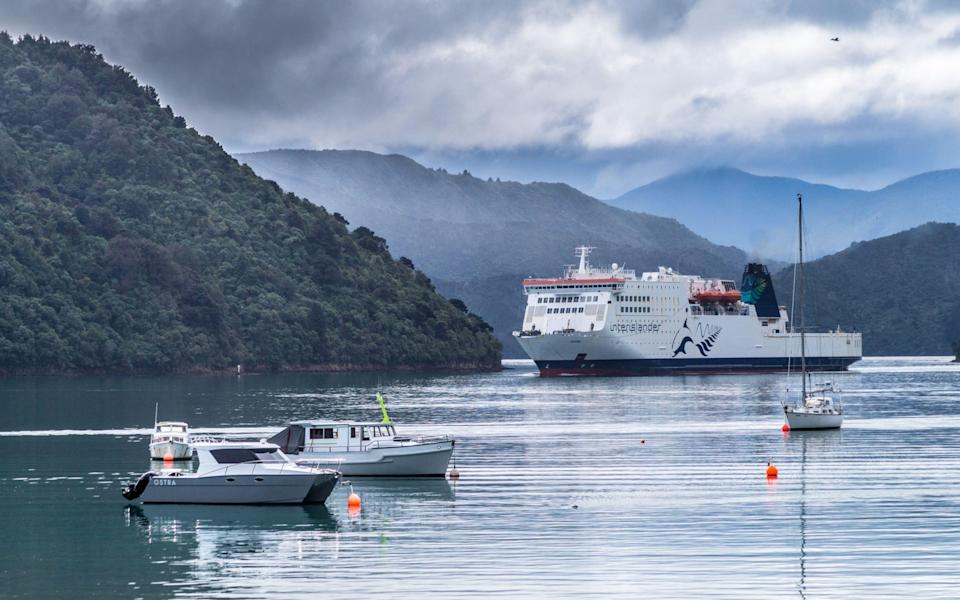
The Interislander ferry across Cook Strait – Interislander
The drive from Christchurch to Blenheim takes about four hours, though another scenic option is the five-hour Coastal Pacific Train to Blenheim’s historic station built in 1910 – gastronomes can treat themselves to its optional Scenic Plus dining experience, with several excellent meals offered during the journey including a choice of fine local wines.
Once in Blenheim, you can easily drive around the region by car, though many of the wineries are accessible by taxi or bicycle from both Blenheim and Renwick.
Broaden your horizons with award-winning British journalism. Try The Telegraph free for 1 month with unlimited access to our award-winning website, exclusive app, money-saving offers and more.

